How Set-Piece Success Paved the Way for Spain’s U-19 Euros Title
It has been a glorious summer for Spanish football. La Roja have reached the Olympics Final, won the European Championships and take home the U-19 Euros as well. Spain achieved plenty of success thanks to their impressive work in terms of both attacking and defending set-pieces and even scored a goal from a throw-in. They had various different methods in terms of exploiting corner kicks, often attacking the near post and central area in front of goal and executing the job well in terms of the delivery and timing of these set-pieces.
Spain targeted the near post on a consistent basis, with five players forming a block inside the opposing box. Three of them would help pull the opponents towards the far post whilst two stood on the edge of the box, with one charging towards the near post and the other following his movement. In doing so, Spain sought to exploit the gap on the near post where the opponent would leave space in behind. The first player would attract the attention of the defenders whilst the second runner would try to control the ball if the first didn’t win it.
They heavily relied upon Wassim Keddari and Iker Bravo to attack the near post, but these two struggled in terms of their timing and their ability to get accuracy in their strikes. As we can see in the below example vs. Turkey, five Spanish players were in the box with Jesus Rodriguez standing on the edge of the box and four players waiting on the far post, with Keddari leaving that cluster and running to exploit the space in behind Rodriguez.
The other three players charged towards the far post, and Turkey’s six defenders meant that Spain instead attempted to target the gap between the defense and the near post. Rodriguez rushes towards that position and arrives at the right time, but the speed of the delivery meant he wasn’t able to connect. Keddari did manage to arrive in time to get a shot off, but he failed to make a clean contact.
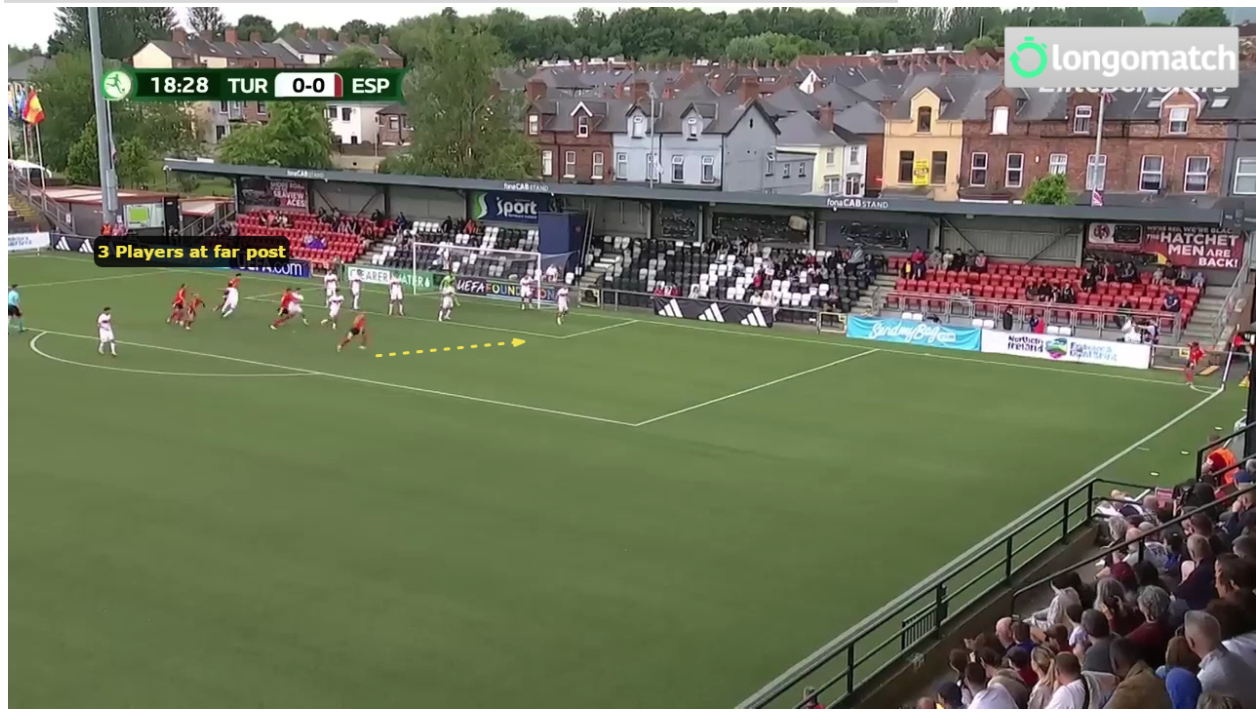
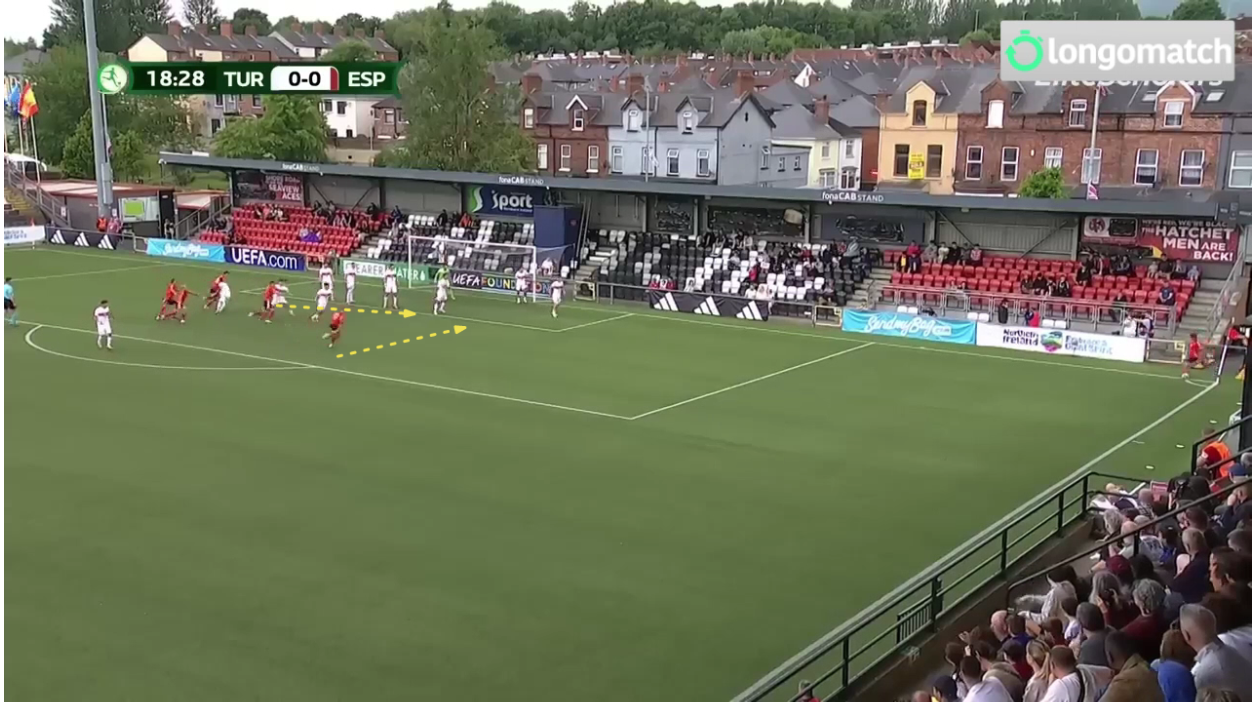
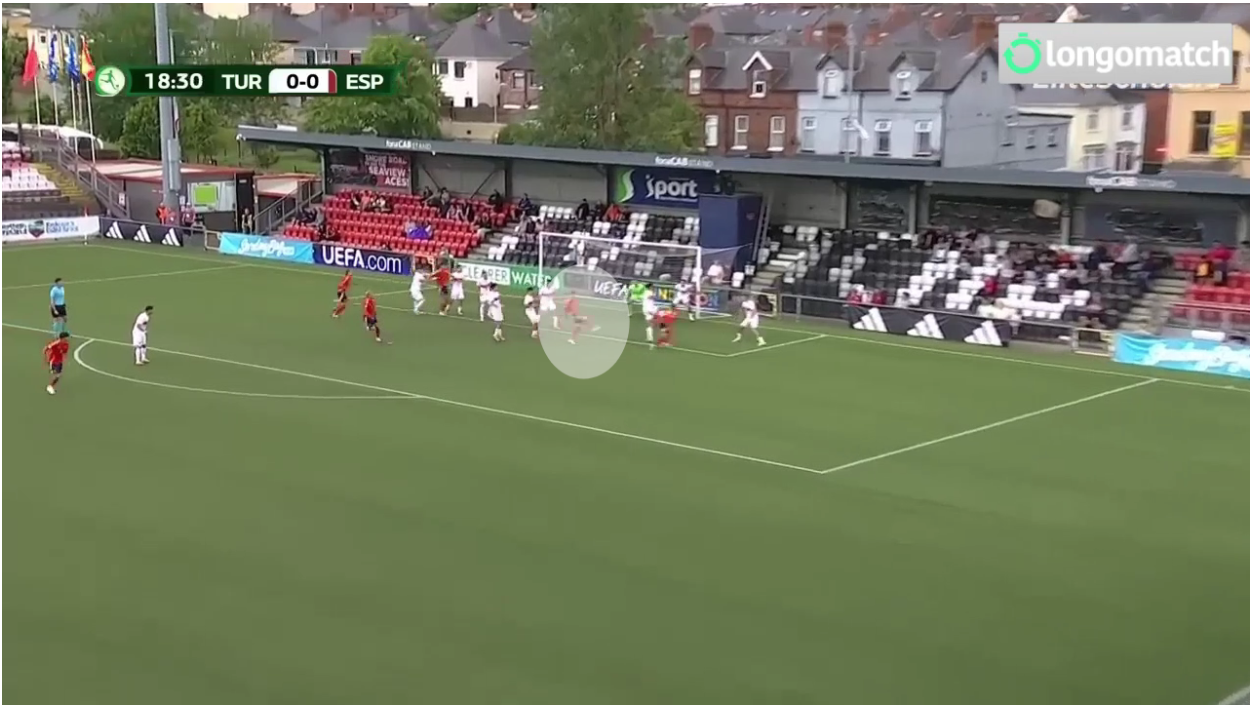
Against Italy, Bravo was positioned in front of the defense at the near post, whilst four players were positioned at the far post. Keddari would leave this cluster and run towards the near post behind Bravo, but the Italian defender was able to anticipate his attempt and prevent the Spaniards from threatening on goal.
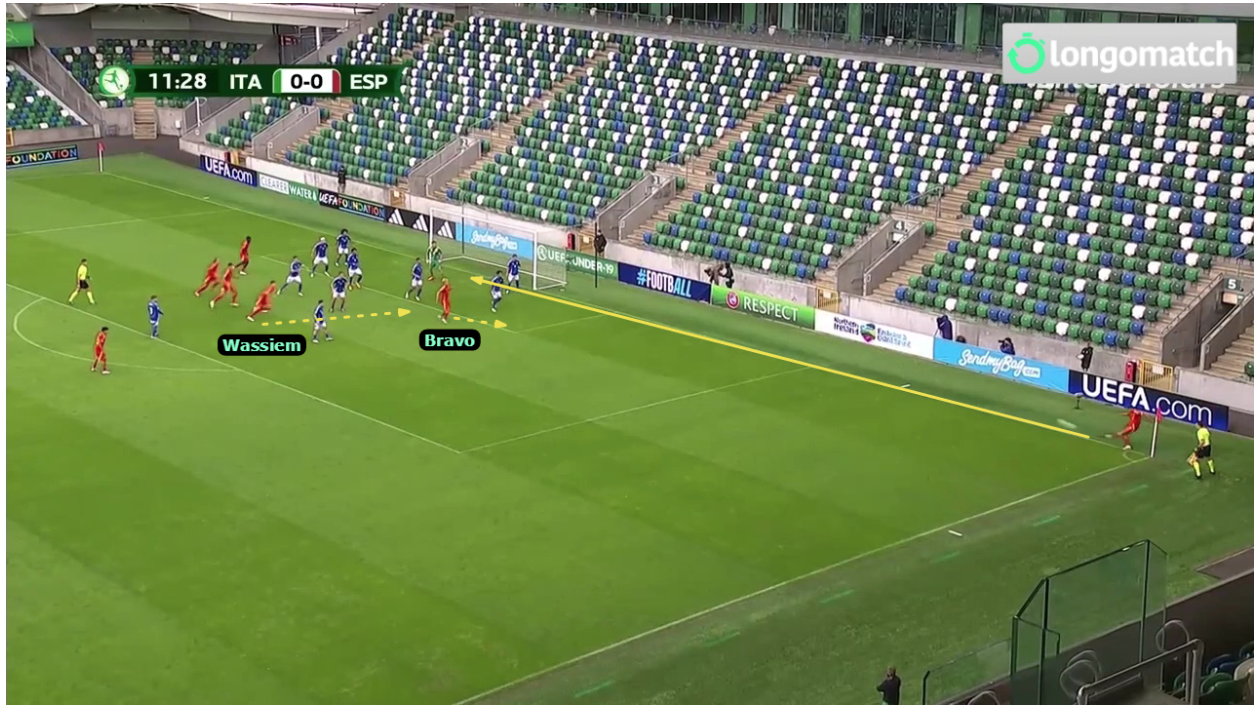
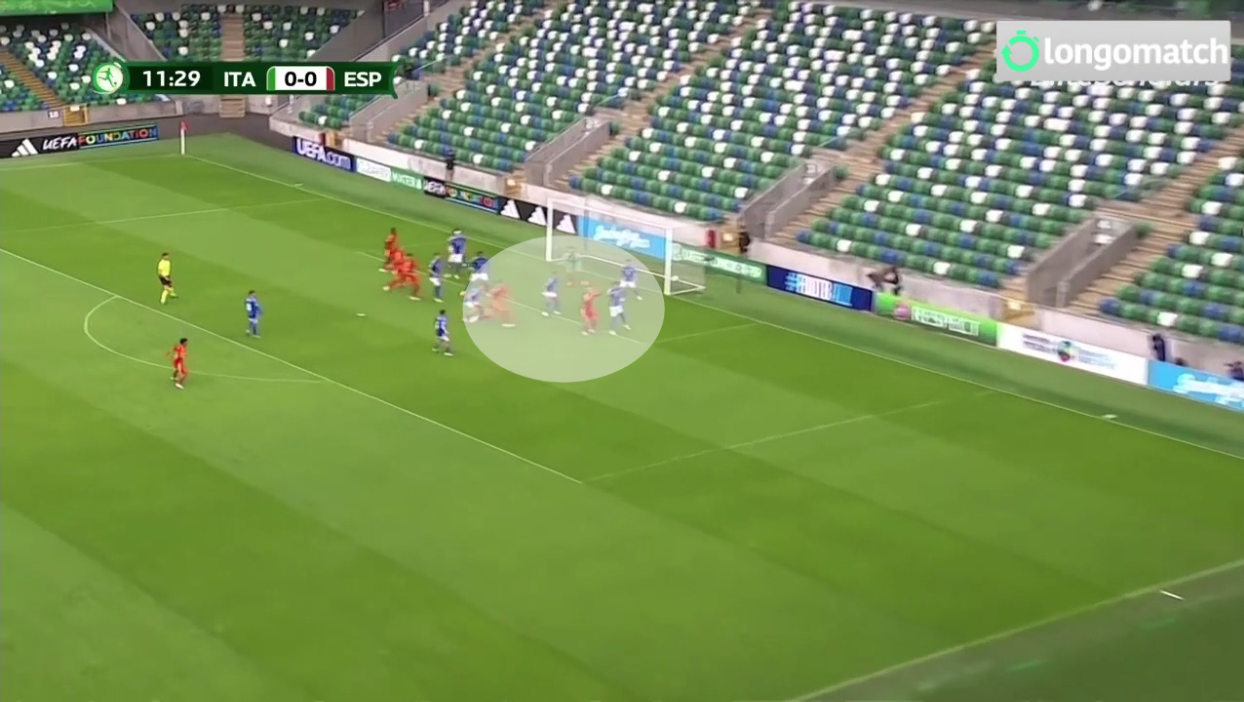
Spain relied on a screening technique in front of Turkey’s defense, with three players on the far post, one player in the middle and two on the edge of the box. Dani Rodriguez stayed in the center whilst Keddari ran from the far post to the near post in order to discombobulate another defender, with Rodriguez moving well and disrupting the marker as intended. However, Keddari was unable to get a clean attempt and register an accurate shot.
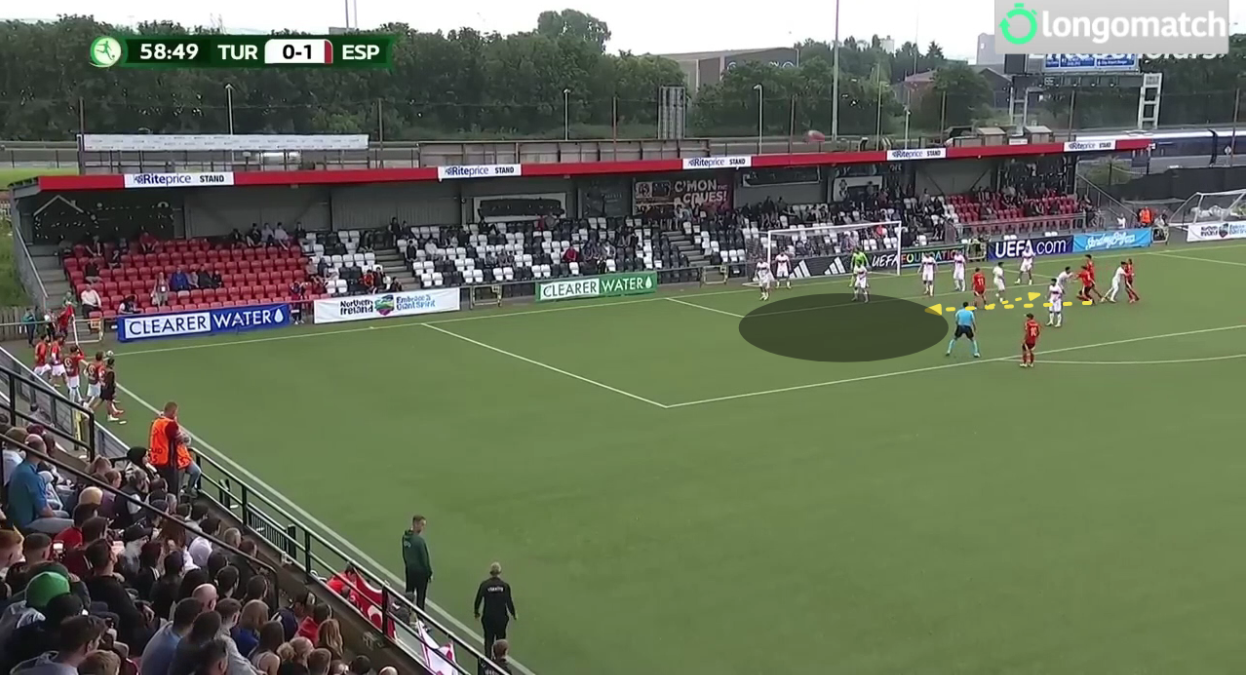
Here, Spain relies on placing the largest number of players on the near post, as a player stands outside the near post and transfers the ball to one of his teammates. The number of Spanish players in this routine reaches six or five players, as they move in different directions before kicking the ball. At the moment of kicking, four players move on the near post and a player moves back and a player on the far post.
This pattern is repeated against France with Rodriguez moving to the outside of the post whilst Keddari follows him. In this way, the Spanish players forced the French players to enter the six-yard area and left a space behind them that the Spanish players on the edge of the box could exploit with a strong finish. Dani Rodriguez tried to pass back but the ball bounced off the French defender to go to David Mella, who was positioned on the edge of the penalty area, and he shot it well but it did not hit the back of the net.
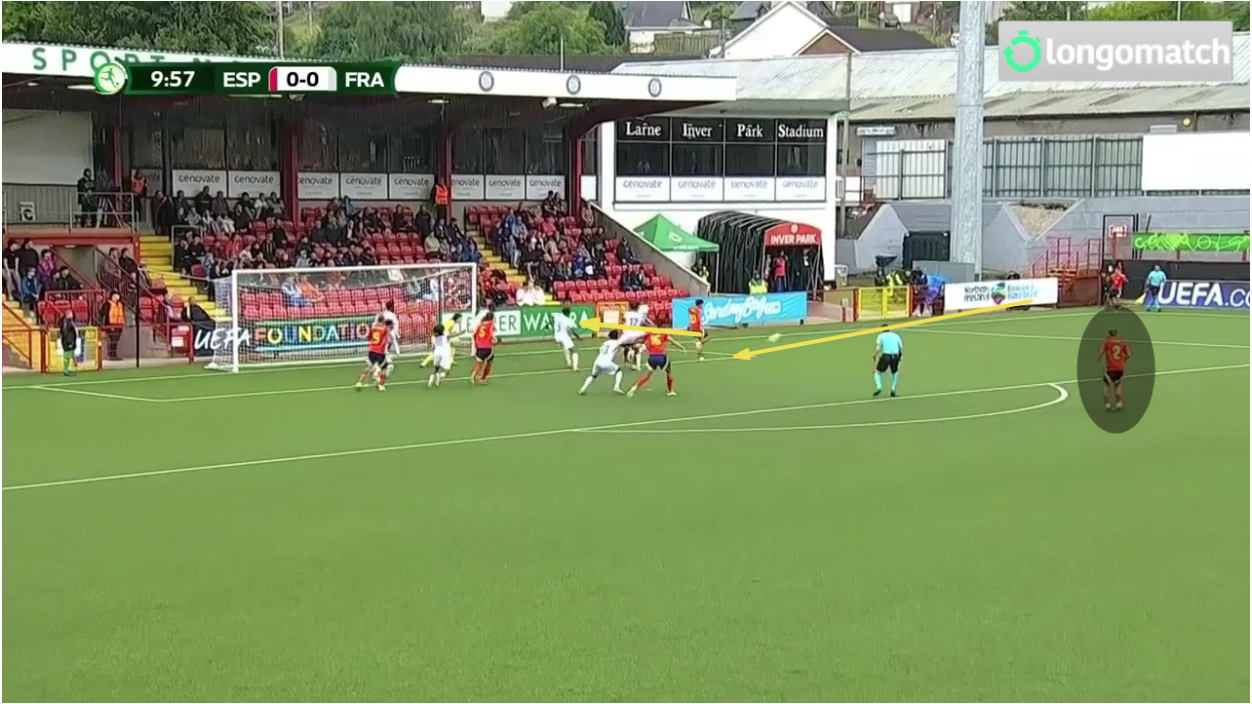
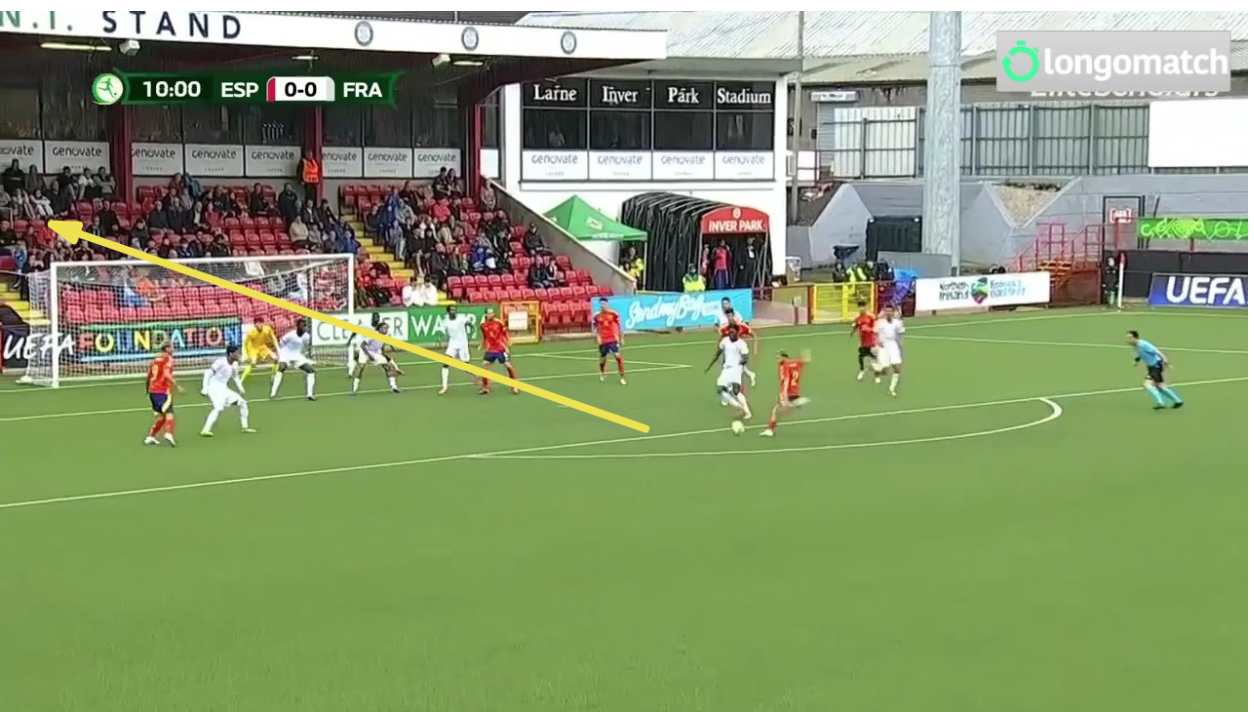
Here, Spain’s five players are going up against France’s eight players, with Bravo running towards the near post whilst France wasn’t quite covering the boundaries of the penalty area. Chema Andrés took advantage and tried to shoot but the ball sailed away from the post. In general, the routine was successful and depended on emptying the boundaries of the penalty area and trying to react first they failed in the first contact.
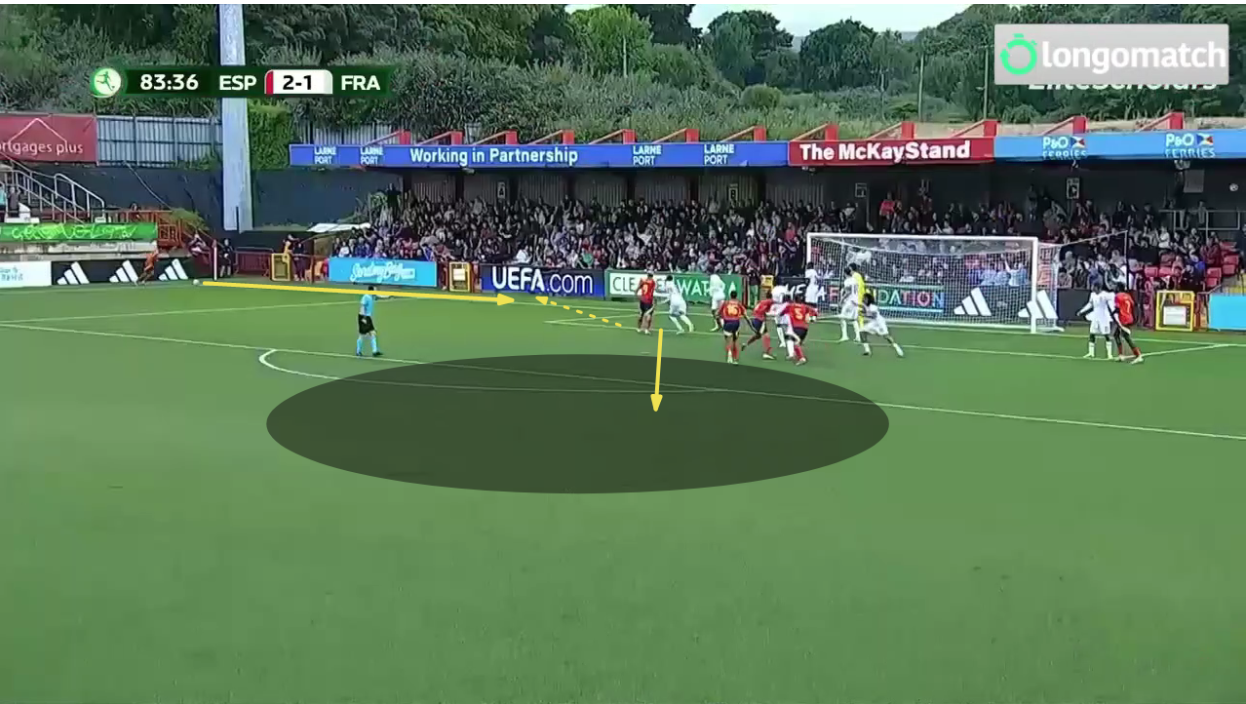
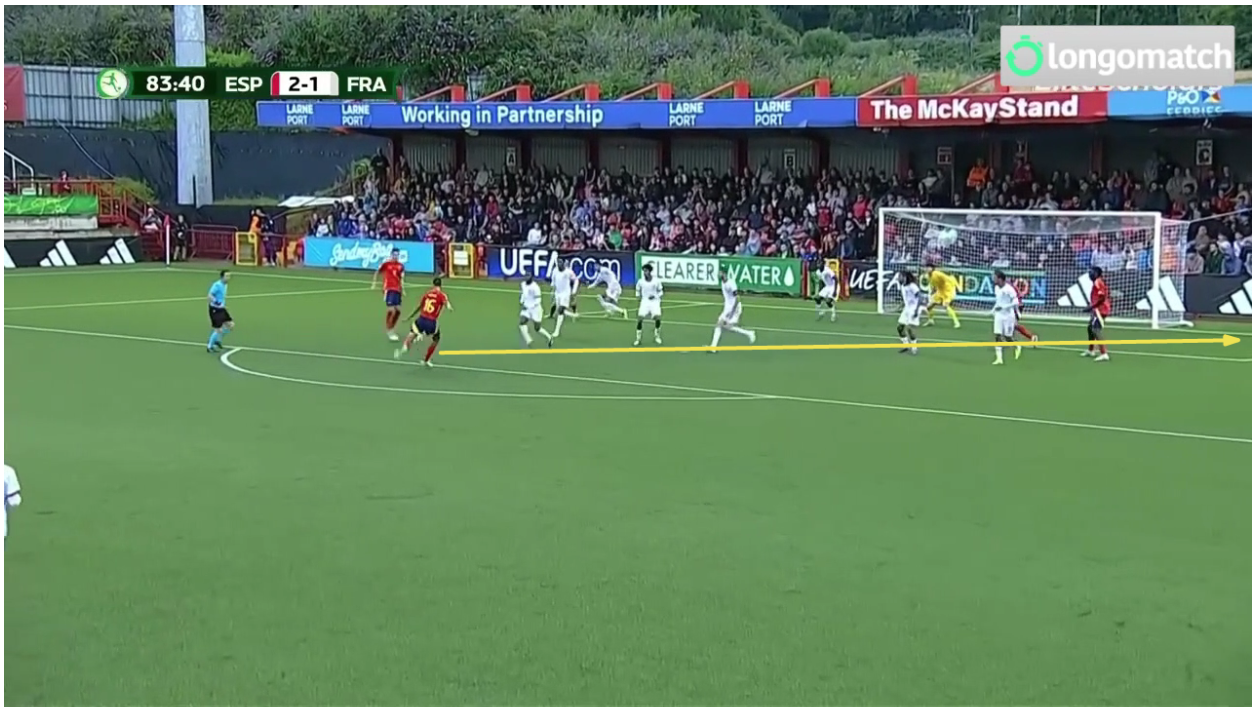
In this example, Spain target the central area and attempt to break the opposing defensive systems and try to move some of the opponent’s defenders to empty the area. One player stands near the near post behind him in the central area, four players versus two players from Turkey and two players on the edge of the penalty area challenge for the second ball. Turkey is pushing the defense of the area with six players and four players mark their man, whilst the targeted player is Yarek Gasiorowski.
Keddari runs towards the near post and Rodriguez screens Keddari’s marker, whilst two players from Spain remain against one defender. Keddari’s run helped to relieve the marking in the targeted area, a gap and a small space appeared, and Gasiorowski attacked this space and met the delivery to convert the opening goal.
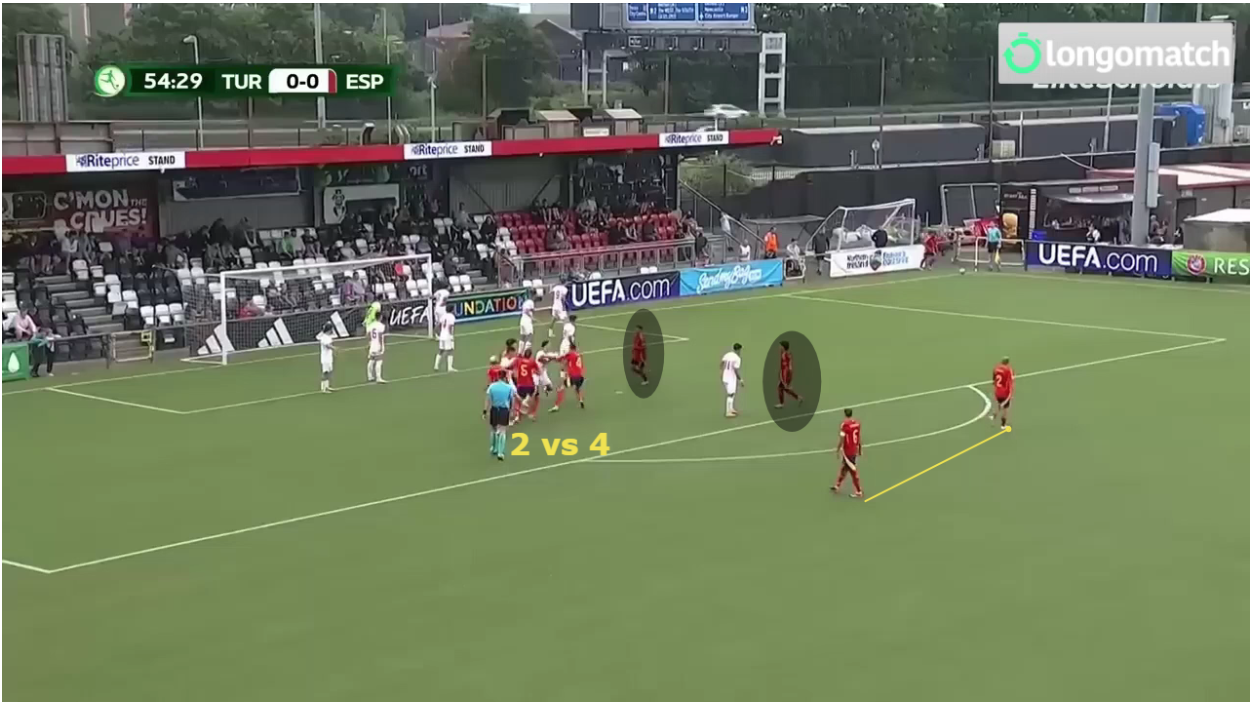
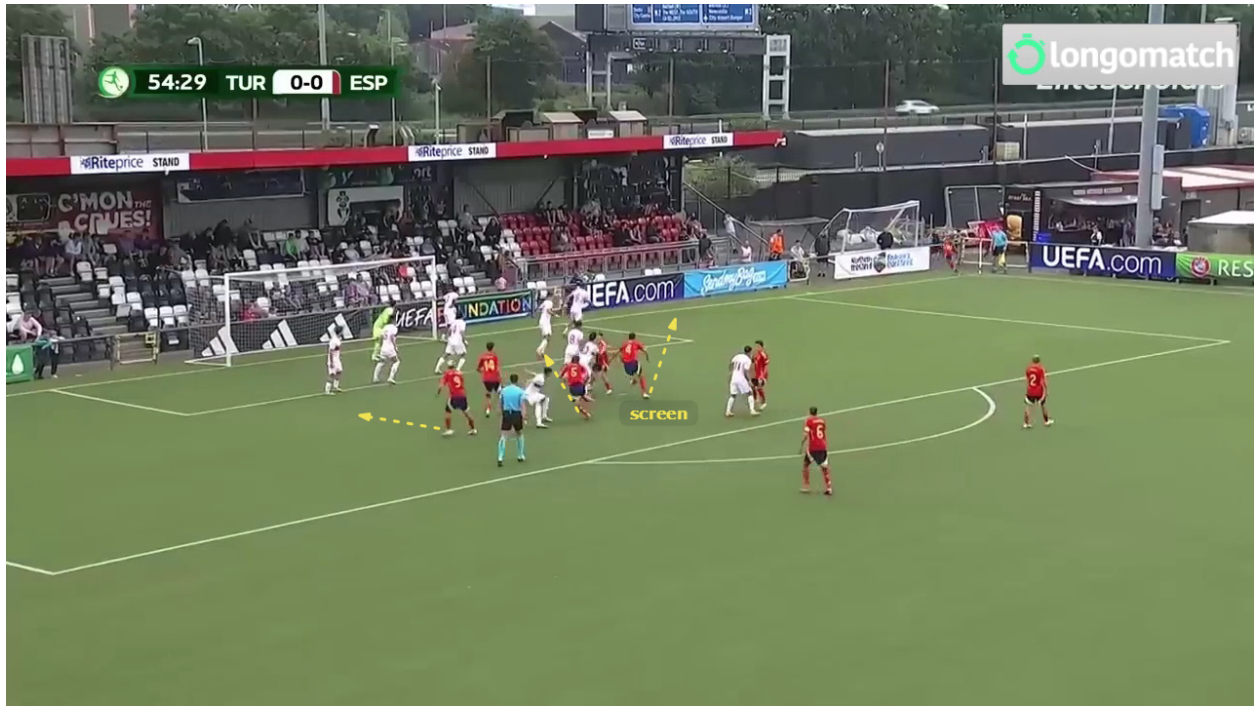
Against France, Bravo stands at the near post whilst four players prepare to run from the far post to the near post. The other three players remained at the far post, with Bravo activating the screen against two French players which enable Keddari to run and jump without being marked, connecting well with the delivery and getting a solid effort.
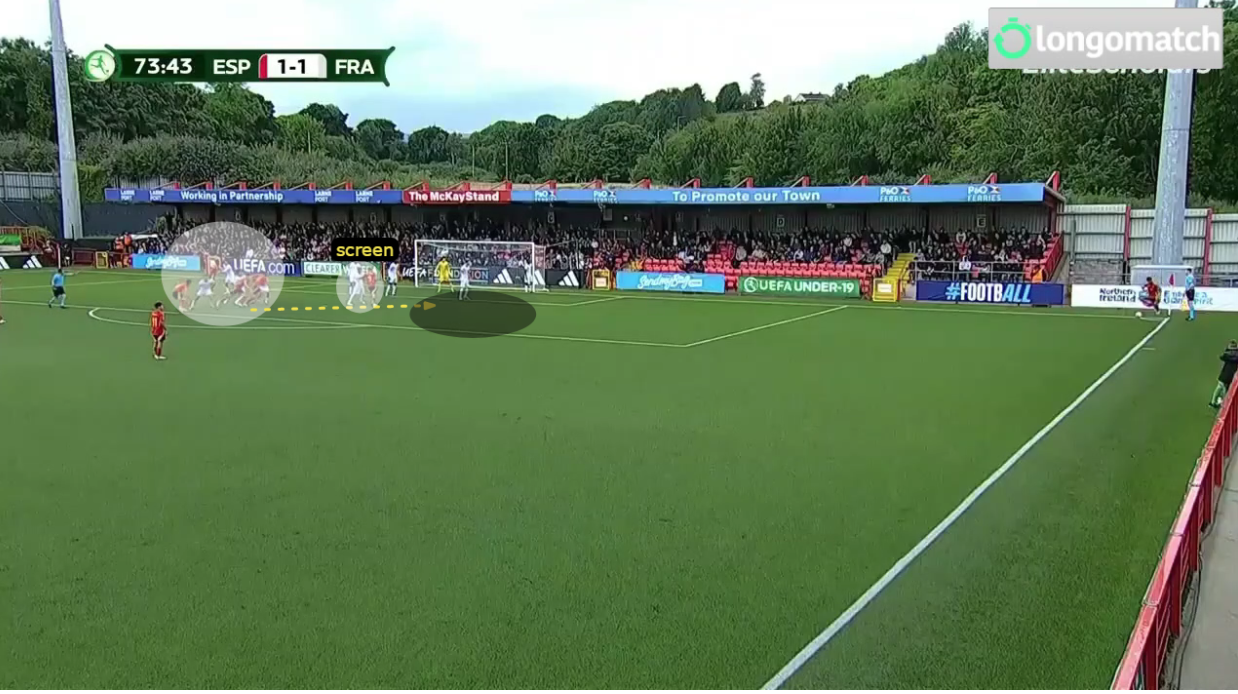
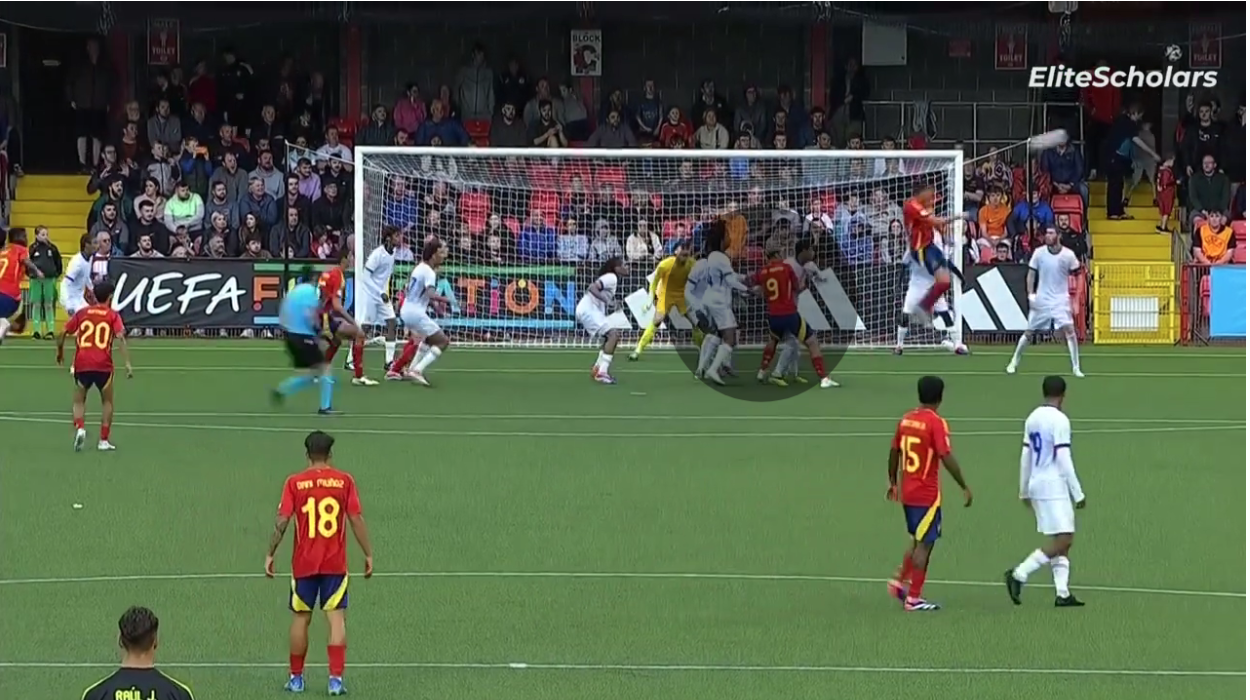
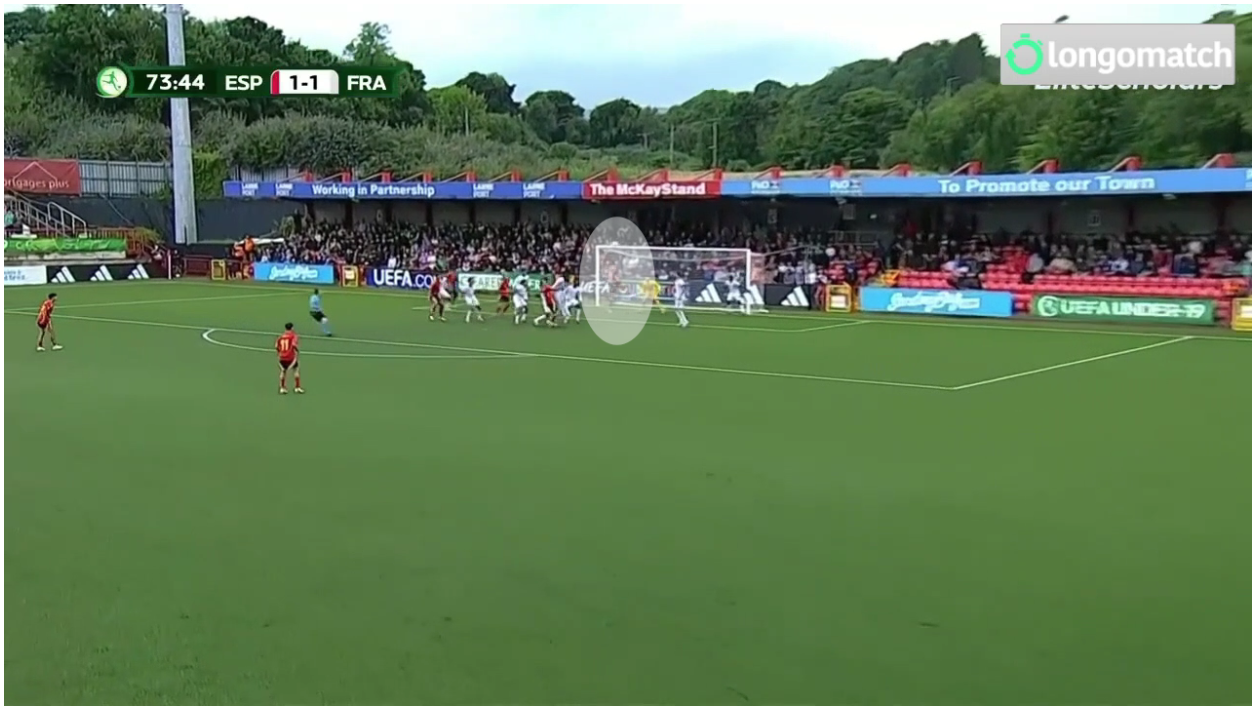
Spain kicked off their U-19 Euros campaign by defeating Denmark 2-1 in Larne before conceding back-to-back 90th-minute equalizers to Turkey and France, whilst they were able to confirm their spot in the final as Pol Fortuny’s 100th-minute goal saw Spain prevail 1-0 against Italy in extra time. La Roja managed to beat France 2-0 in Belfast courtesy of goals from Iker Bravo and Assane Diao, claiming a record 12th title and adding yet another piece of silverware to their trophy cabinet.
By: Mahmoud Salem / @masalem6
Featured Image: @GabFoligno / Quality Sport Images / Getty Images
